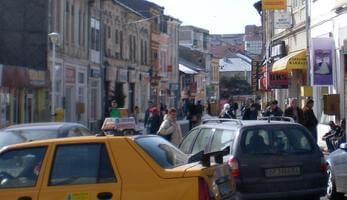Policy option for freight distribution schemes
Thematic areas
Urban logistics
Summary
In order to solve its increasing traffic problems, partly due to goods transportation and delivery in urban areas, Craiova aims to create a pollution-free centre and to develop a plan for goods distribution. The objective of the measure is to initiate an incentive system for using non-polluting cars for freight distribution in the central low-emissions zone.
Implementing sustainable mobility
The goods distribution scheme in the city centre will be a differential tax scheme based on the criteria of the various levels of vehicle emissions, to limit the pollution in the downtown area. The scheme foresees an incentive for operators using cars with low pollution levels. The narrow streets in the downtown area mean traffic cannot flow in both directions. Many of the possible access points are on one-way streets. Traffic conditions on these streets and accessibility needs to be correlated with the supply needs downtown.
Developing a distribution scheme plan based on benefits rather than on restrictions and charges (for instance: clean vehicles would benefit from a more flexible program for freights distribution) is a necessity as the centre will be permanently closed to traffic. Currently, there is no plan in place for goods distribution at urban level and big industrial and commercial companies have their own, independent systems for goods distribution. The freight distribution cars that go to the Craiova fruit and vegetables markets only have two hours access in the morning and two at night to avoid disruptions to commercial activity.
Progress
The planning and design of the measure was the first action carried out. Various aspects were identified and investigated such as the existing situation, downtown plans, documentation on closing the city centre, the current freight regulations and the area for goods distribution where measure will be applied. The analysis showed that economic activities in these areas are mainly shops and offices and that the commercial operators will be affected more than other stakeholders. A study of the solutions adopted by other cities was carried out in parallel, in order to better understand the rules applied and to verify the possibility of adopting them in Craiova.
To create a detailed distribution plan several topics were explored:
- The number of companies in the area of interest;
- The number and type of vehicles used by each company for goods transportation;
- The supply frequency and volumes;
- The GHG emissions and standard emissions of distribution vehicles and loading / unloading points.
The Craiova University, Transport Faculty was chosen to perform the extended study for goods distribution in a defined area, which covers the downtown.
Outcomes
Craiova expects that the measure will:
- Reduce pollution levels in the city centre;
- Make goods distribution smoother and more regulated.









